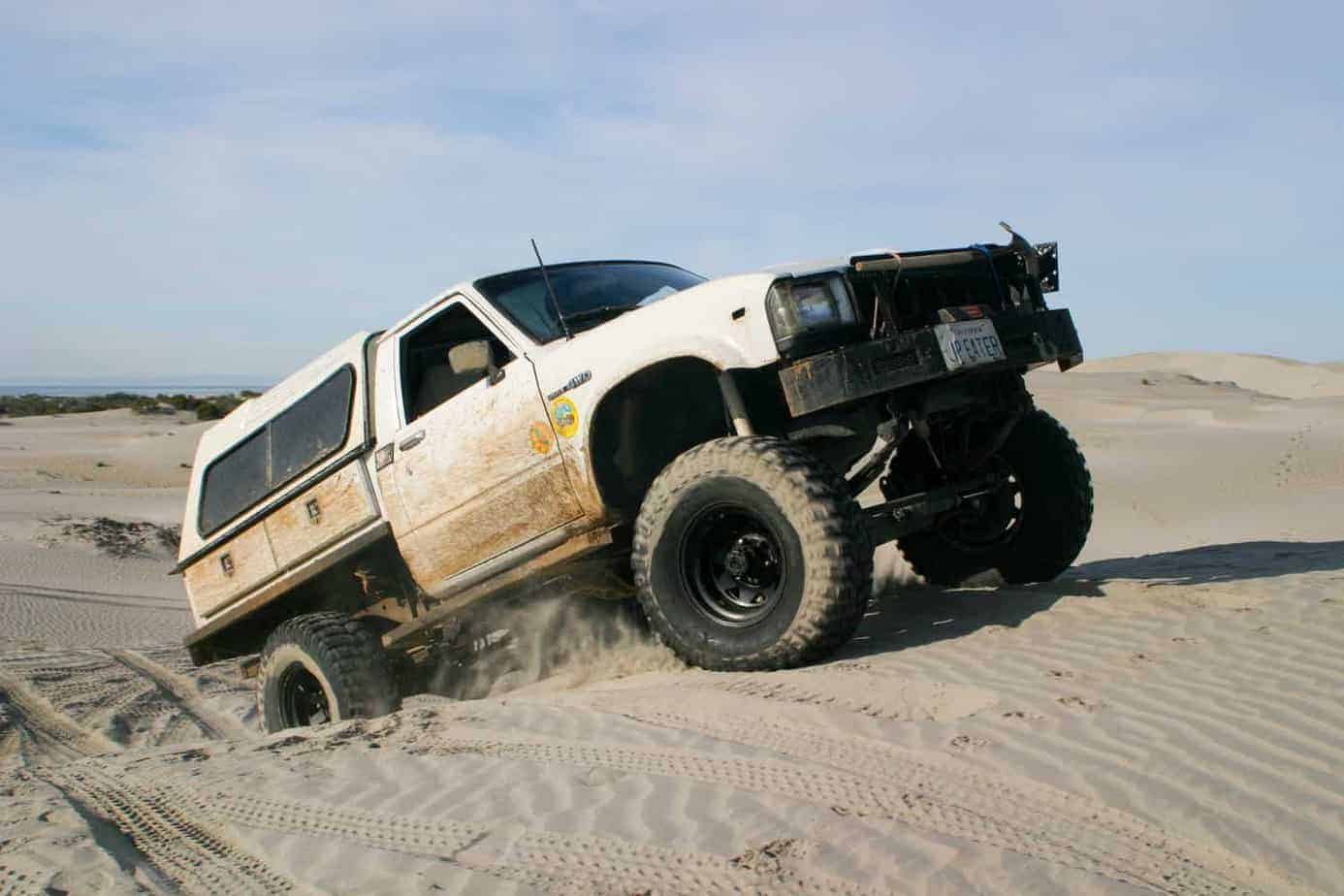Rancho, which began in 1955 in Long Beach, California, as Rancho Jeep Supply, is the undisputed granddaddy of the four-wheel drive shock and suspension world. And while most shock manufacturers claim that their product is the best thing since the invention of peanut butter, we were quite surprised last year when Rancho’s RS9000XL drove away with the Editor’s Choice Award—they do have a bit of a reputation as a vanilla brand.
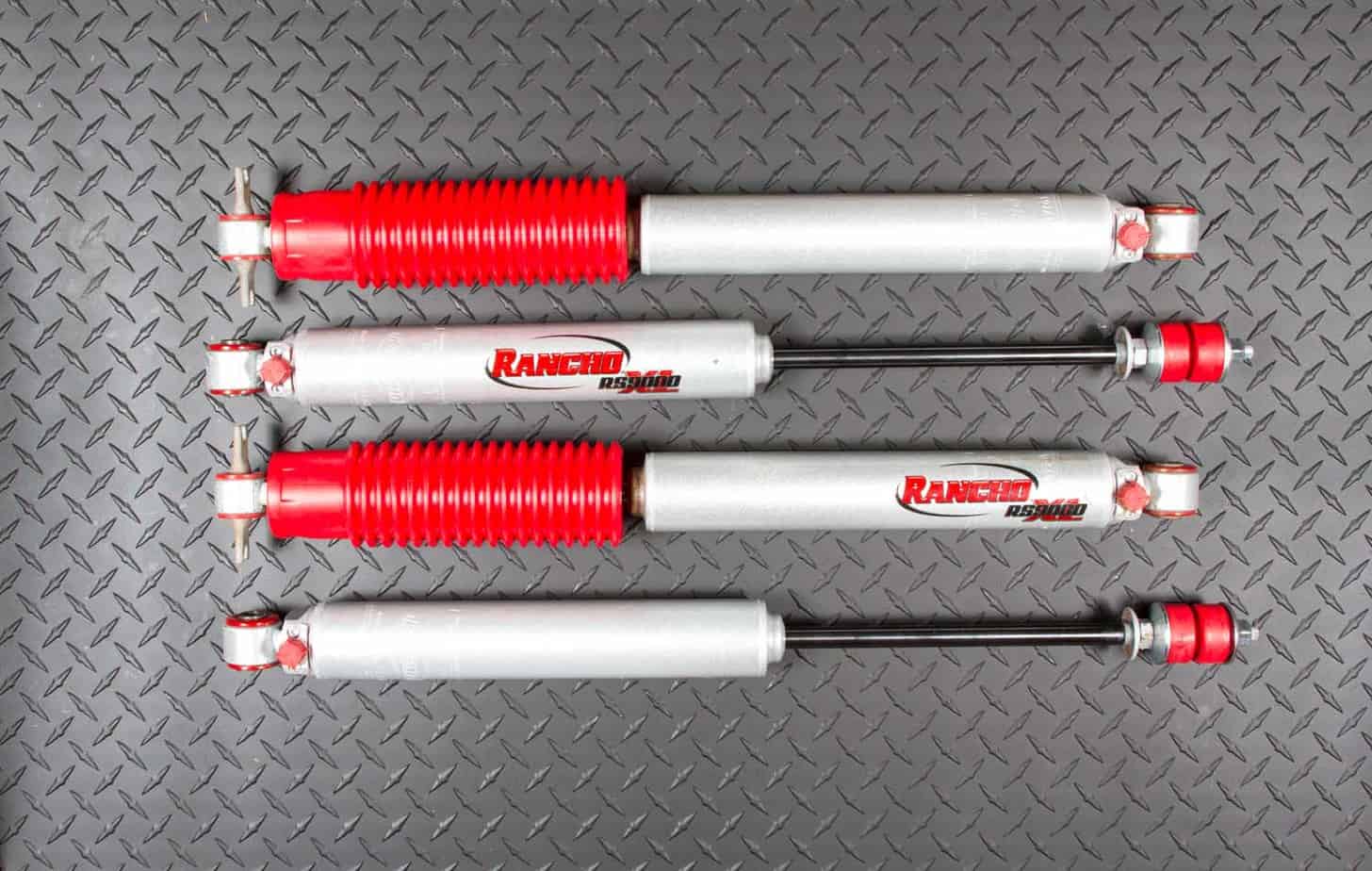
The test was what I consider to be one of the most comprehensive shock comparisons to date, and included track, field, trail, and dyno analysis. Evaluators were professional test driver and Baja 1000 champion Joe Bacal, and longtime dirt dog, Baja racer, and journalist Ned Bacon. When the dust settled, the three of us independently came up with the same top pick: the twin-tube RS9000XL.
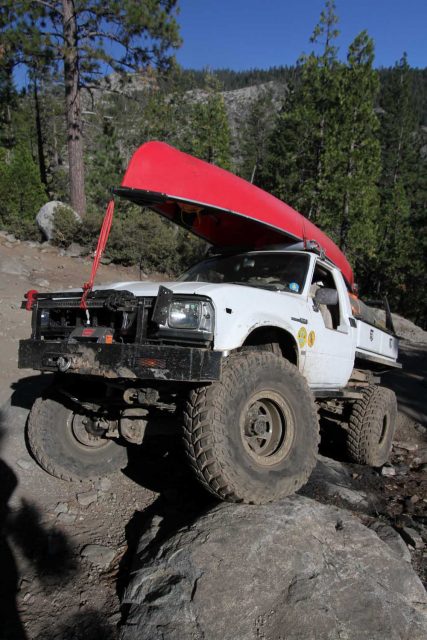
In nearly every category, from yaw response and damping, to body roll, traceability, and feedback, the 9000 received maximum points on our internal scoreboard. In G-outs and hard cornering through a harsh Northern Nevada test track, the test vehicle, a 4-door Jeep JK Wrangler, simply hunkered down and moved on. There was almost none of the normal steering wheel feedback you normally get from a live axle (chatter) and limited body roll. On the dyno the 9000XL displayed the highest resistive force, both on compression and rebound. The other consideration was that thermal buildup was slow and the shock’s maximum temperature in our high-paced desert test was a only 136°F, the lowest in the group. I shouldn’t have been taken aback though—I’ve been running RS9000s (and RS5000s before that) on my “punk kid” 1982 Toyota Hilux since 1984, and they’ve always served me well.
One of the reasons this shock works well for my Hilux is that the suspension is very soft and the 9000’s nine-position dial allows me to select between a “very firm” and “very soft” ride depending on the load I’m carrying and if I’m on the trail or highway. This is accomplished by a spring-loaded check valve, located in the base valve, which restricts or allows the flow of oil to the outer tube. I don’t take this vehicle to Baja, Mexico,
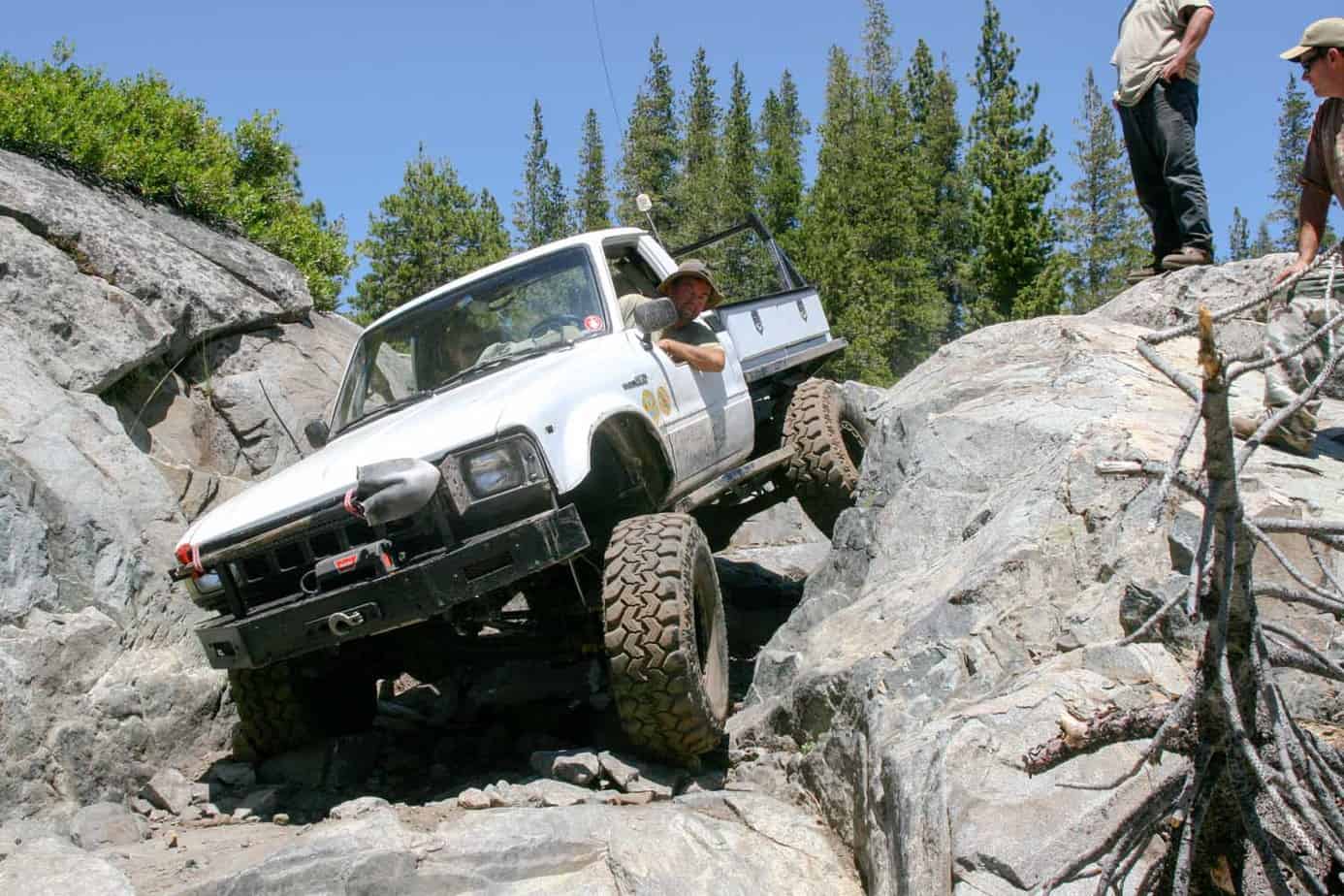
anymore, but it does get a fair number of trail days in the Sierra Nevada and Northern Nevada deserts. I usually set the dial to the firmest setting on the highway, in the middle on dirt roads, and on a softer setting in technical terrain. Another benefit is that I can adjust the front and rear independently, again depending on load and terrain. I’ve been a fan of this old trail hand for a long time; I must like vanilla! Made in USA. gorancho.com, 734-384-7804 -CC
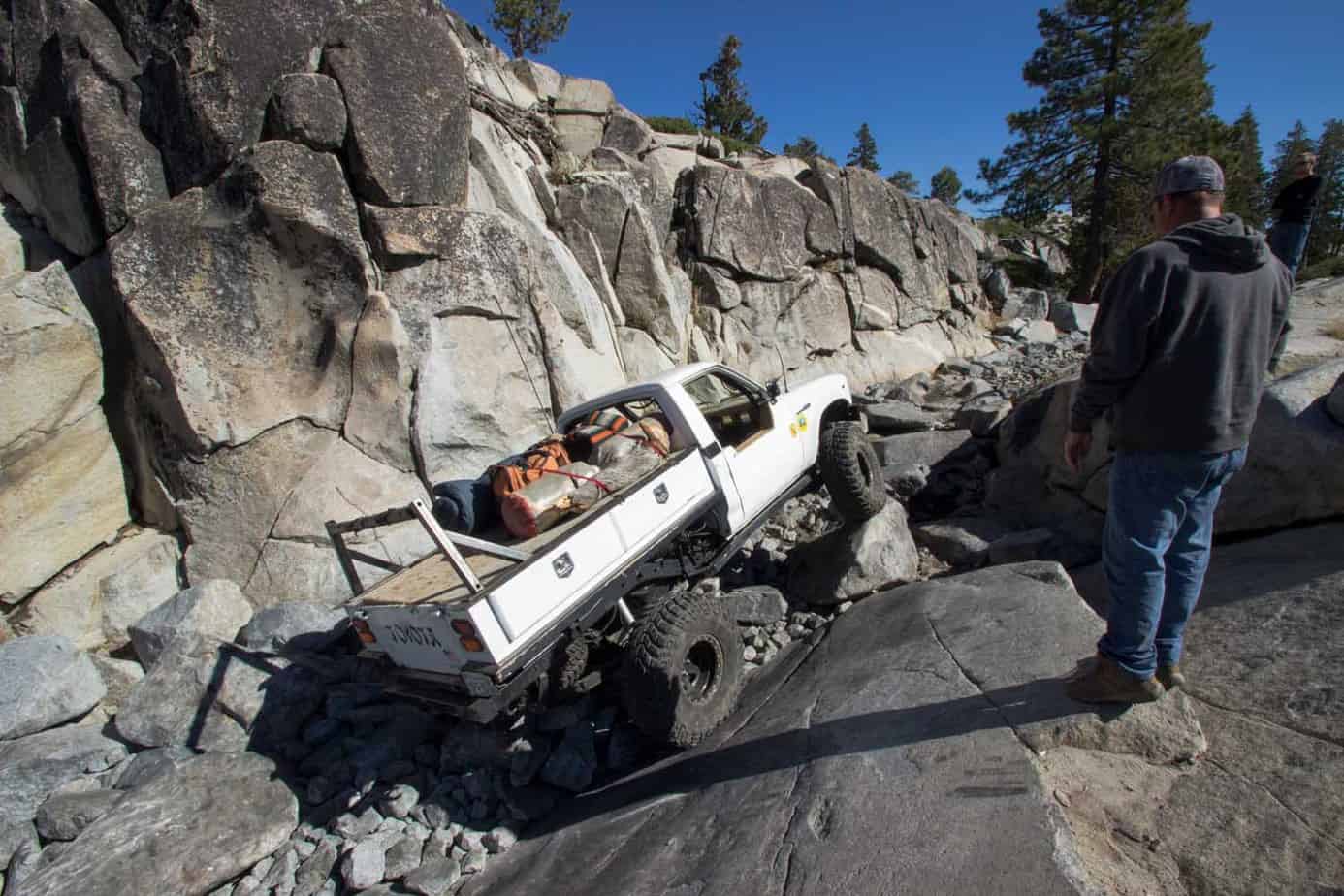
My `82 Toyota Hilux has been fitted with Rancho shocks since 1984, and RS9000s since their introduction in 1990. Though it may not appear like an overlanding rig, it has seen Mexico’s backroads at least a two dozen times, driven to and traversed Moab’s array of trails another dozen, as well as most desert and mountain routes in California and Nevada. The odometer froze up in 1995 reading 292,999 miles. In that time (probably 400,000 miles) it has had three sets of Rancho shocks.

The RS9000XL is a 2.75-inch diameter twin-tube design with low-friction self-lubricating seals, graphite-filled fluon banded piston, 18mm nitro-carburized steel shaft, and double-welded rod ends.
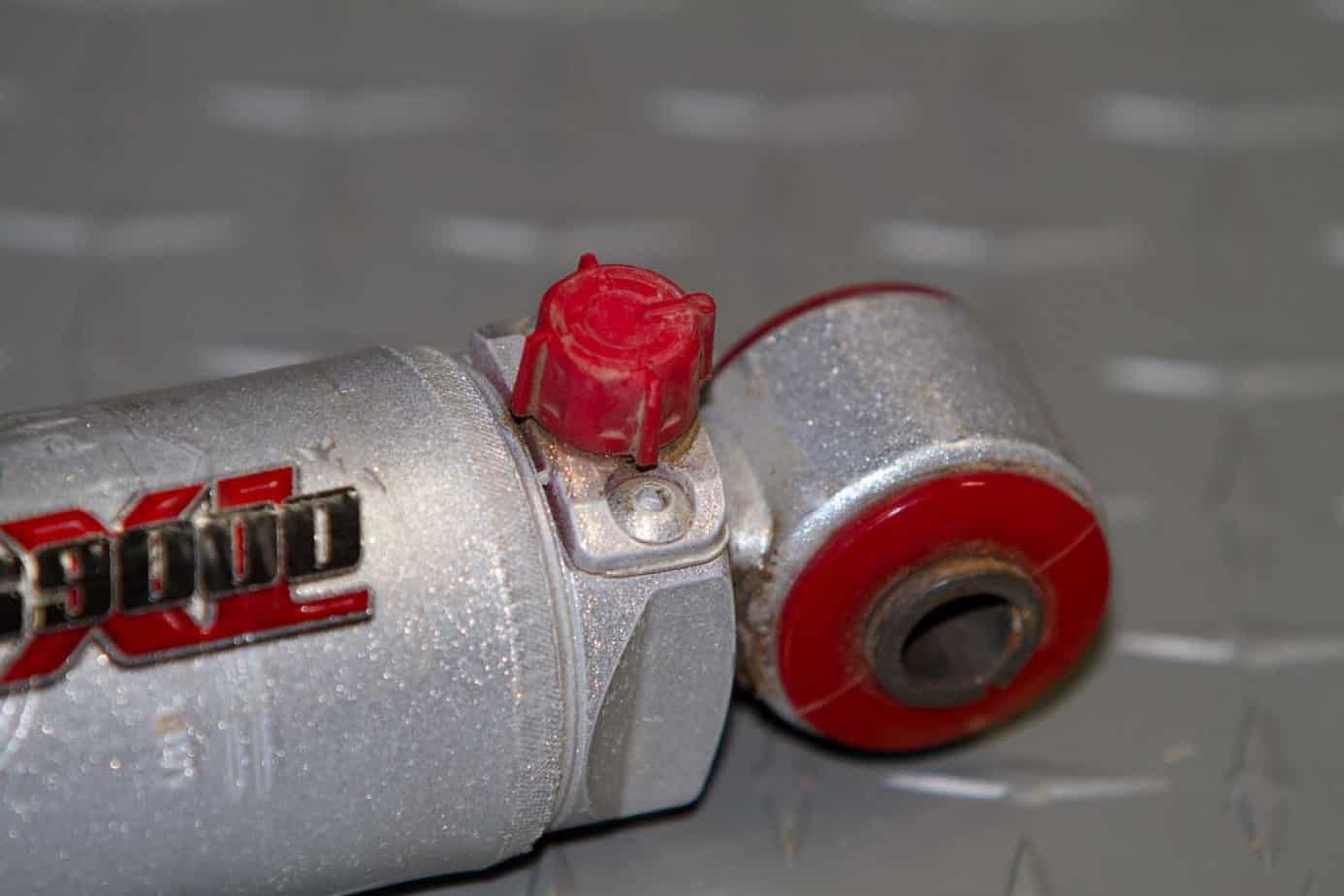
A 9-position dial allows damping to be adjusted from very firm to very soft.
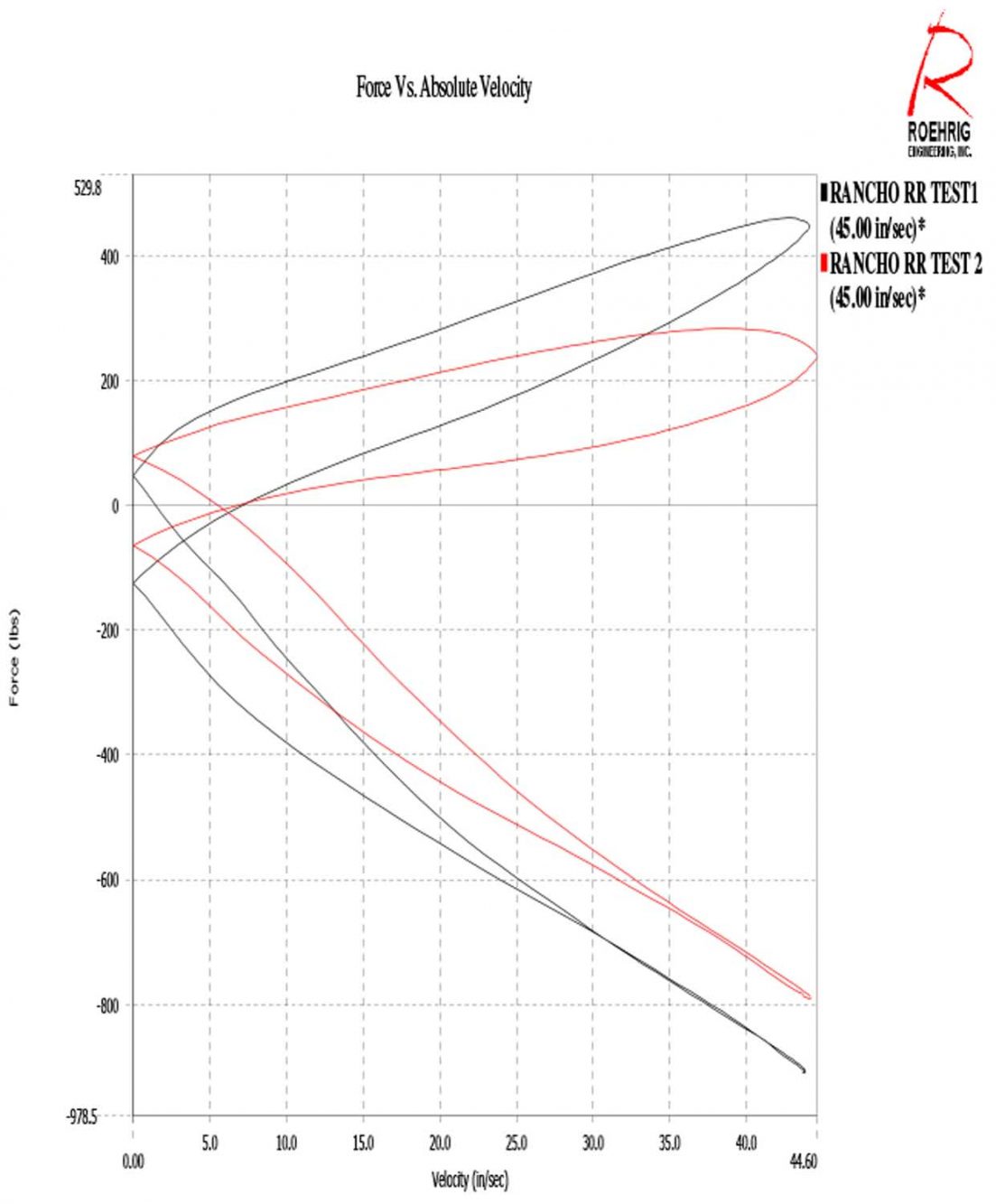
On the dyno the RS9000XL demonstrated 951 pounds of resistive force.


